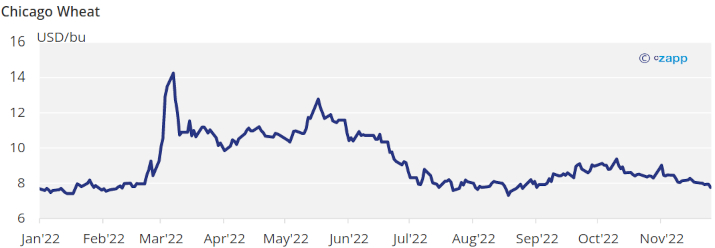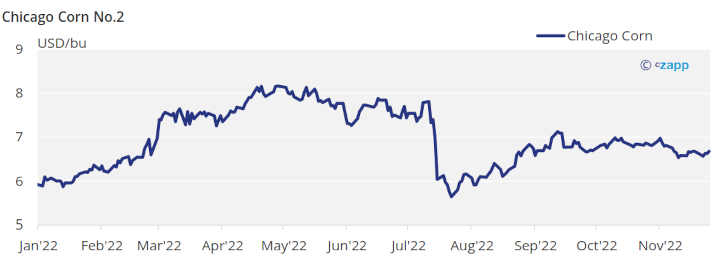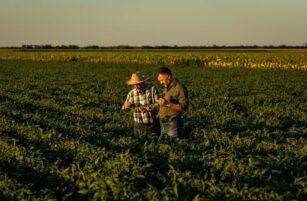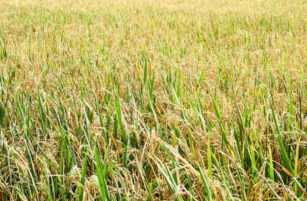Insight Focus
- American wheat is suffering from low soil moisture.
- Higher temperatures may leave EU wheat vulnerable when freezing temperatures arrive.
- There is a risk Ukrainian corn may not be fully harvested.
Forecast
No changes to our Chicago Corn average price forecast for the 22/23 (Sep/Aug) crop in a range of 5,8 to 6,3 USD/bu with an upside bias depending on Ukraine’s harvest and Argentinian conditions. The average price since Sep 1 is running at 6,8 USD/bu.
Market Commentary
Corn was flat in Chicago and lower in Europe while Wheat was lower in all markets. Supply risks arise in Ukraine and Argentina.
The week was short in the US due to Thanksgiving which left US markets with low liquidity and Corn trading sideways recovering by the end of the week after a negative start.
Outside market were not helpful with increasing covid infections in China raising fears of lower demand. Besides the Chinese problem, Corn demand could be hit in Europe as avian flu is increasing, especially in France and the Netherlands and millions of chickens have been culled already. This cold be behind the negative week in EU Corn values.
On the supply side, US Corn is now 96% harvested which continues to be above last year and well above the five year average. Corn harvesting in Ukraine is 53% complete which is just 3 percentual points weekly advance and very much delayed vs. last year. Yield is also low showing 6 ton/ha or -18% year on year. Corn planting in Argentina made almost no advance for a second week in a row now 23,8% complete vs. 23,6% last week and vs. 30% last year and all is due to the very low levels of humidity in the soil. First Corn crop planting in Brazil was 62,6% complete vs. 70.3% last year.
In the Wheat front, US winter Wheat is now fully planted and condition is just 32% good or excellent vs. 44% last year due to low soil moisture. Wheat planting in France is now 98% complete, virtually finished and conditions are 98% good or excellent.

Almost all European Wheat is fully planted after a warm autumn which raises the problem that Wheat has not yet developed frost tolerance and a quick arrival of cold temperatures could result in some winter killing.
In the weather front, favorable conditions are forecast across all major growing areas. The US Plains are expected to receive rains and snow. Brazil and Argentina should also see some rainfall. And Europe is expected to receive a lot of rain with the only problem being higher than normal temperatures.
Trade flows out of Ukraine continue to work properly after the extension of the grain corridor last week and despite some delay caused by heavy bombing from Russia. The weekly volume exported last week was slightly above 1 mill ton which is very much in line with the average weekly volume since the corridor started.
We see some supply risks developing in the market: Wheat in the US and Europe, and Corn in Ukraine and Argentina.
Wheat in the US is suffering from very dry soil moisture and condition is not looking good. In Europe, higher than normal temperatures is leaving Wheat not developing winter protection and the crop could be vulnerable to freezing temperatures when they arrive. By now soil moisture has recovered and condition is very good but winter killing could be serious this year in Europe.
On the Corn side, it seems there is a big chance Ukrainian Corn will not be fully harvested given the delay in their harvesting operations having coincided with the arrival of cold and rainy weather and all under the war conditions they are suffering. If they had already a smaller crop as they had to plant during the war, now the chances of not fully harvesting the crop is big. In Argentina, soil moisture is also a serious problem which is causing a delay in planting and leaves Corn condition very poor.

We therefore see more risk on the supply side than on the demand side which should be supportive prices.












